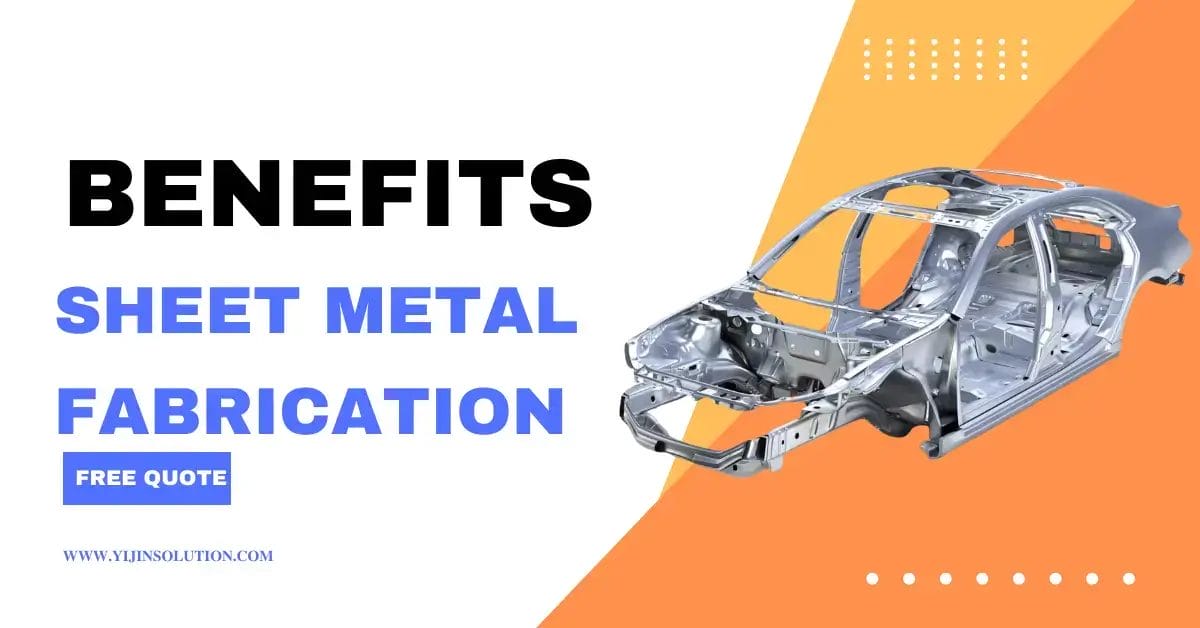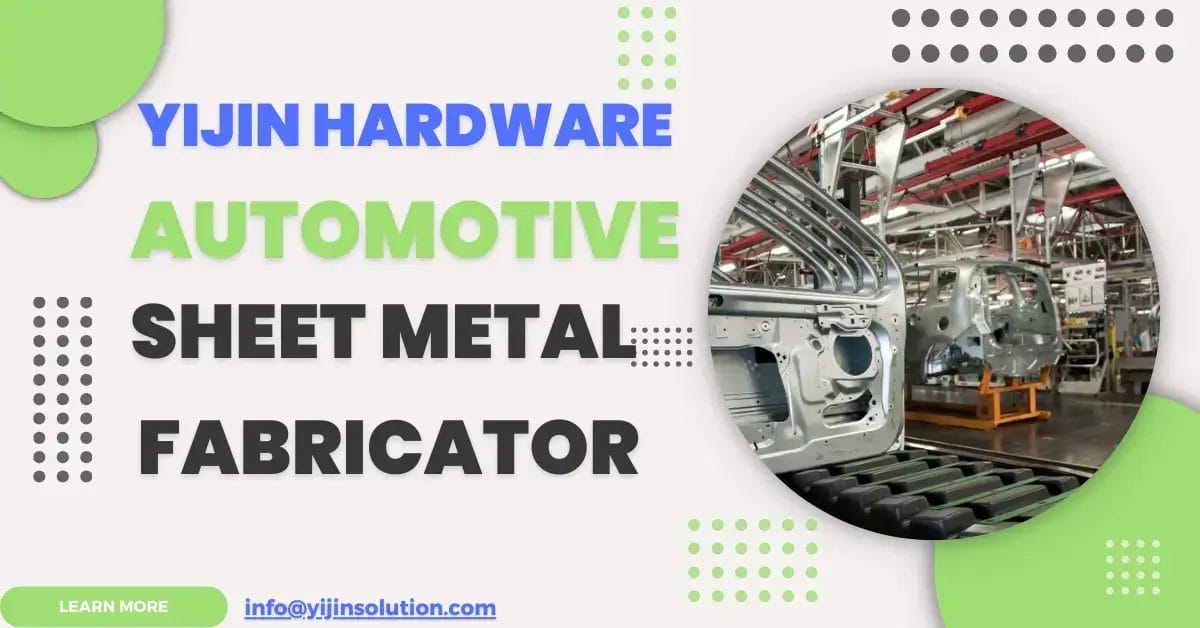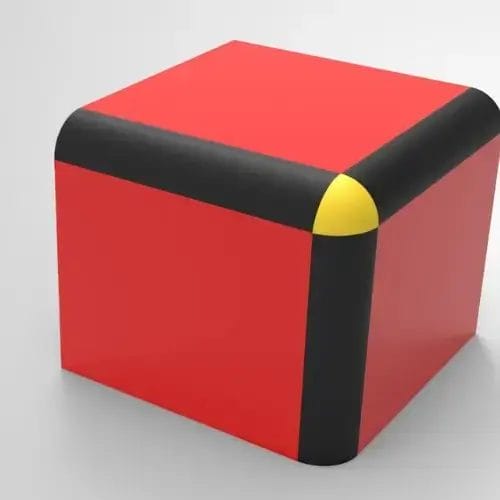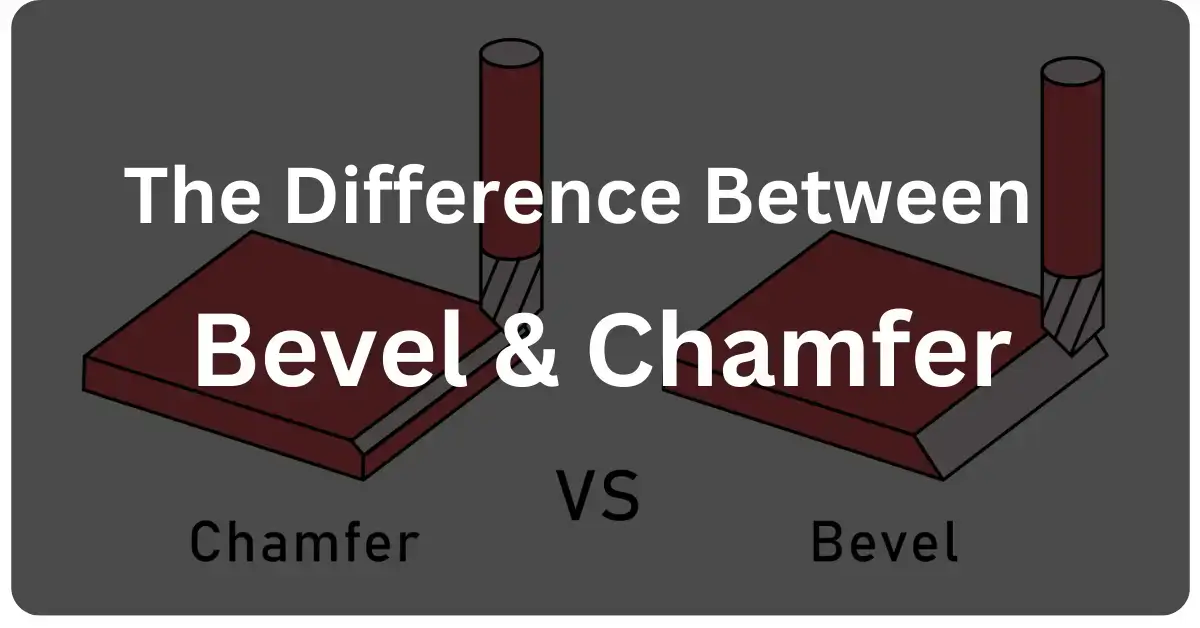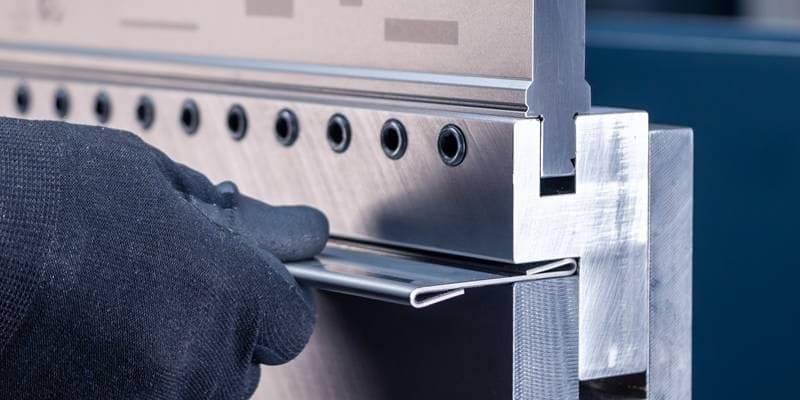Automation is taking its place in automotive sheet metal fabrication. Now, sheet metal fabrication companies are speeding up the process by replacing traditional methods of fabrication with machine-based automation. These factors are driving the sheet metal industry to unparalleled growth. For example:
The global sheet metal market is expected to reach USD 450 billion by 2033. This report by Research Nester also explores the application of sheet metal fabrication in building materials, aircraft parts, and car parts.
So you can see, the automotive market is expanding, and its demand for complex parts is increasing. Sheet metal fabricators for automotive are infusing the latest technologies to meet this demand. In this article, you will go through the basic understanding of automotive sheet metal fabrication.
What is automotive sheet metal fabrication?
Let’s try to understand this concept in simple words. Sheet metal fabrication is the process of shaping different metals and assembling them. Similarly, in automotive sheet metal fabrication, fabricators shape sheet metal parts for automotive purposes. This process includes several steps and materials. We shall read the details ahead, but here is the gist of the entire process:
Materials:
- Steel
- Aluminum
- High Strength Alloys
Process:
Tools and Equipment:
- Press Brakes
- Stamping Presses
- Laser Cutters
- Welding Machines
- CNC Machines
Benefits of Sheet Metal Fabrication in the Automotive Industry
Since sheet metal has a versatile nature, it can be easily customized to make a range of car parts. Therefore, car ma manufacturers prefer sheet metal fabrication for the following reasons:
Lightweight Manufacturing
Sheet metal incorporates aluminum and high-strength steel to make strong body parts. Not only does it maintain overall car balance, but it also significantly improves car fuel efficiency.
Cost-Effective Solution
Automotive sheet metal fabrication is pretty affordable compared to traditional methods. For example, you can easily produce car parts in bulk at a very affordable cost. Subsequently, the turnaround time is also short. The readily available materials also reduce material waste and carbon footprint.
Furthermore, automation reduces initial setup costs and labor input. What are some prominent ways to reduce costs in automotive sheet metal fabrication?
- Stamping Efficiency
- Material Efficiency
- Automation
- Scalability
High Precision Car Parts
With the help of computer-aided designs, sheet metal fabrication can produce high-precision parts with optimum accuracy. Moreover, you can accelerate the production process with automation features. These high-precision custom car metal parts guarantee a good fit and alignment of components.
Fast Prototyping and Lead Times
Preparing prototypes serves several advantages. In sheet metal fabrication for automotive industry, making prototypes is easy and cost-effective. So, car manufacturers can evaluate their design quickly. Not only this secures their investment but also save a significant time.
Sustainable Option
Sheet metal is a recyclable material. It means making car parts incurring sheet metal fabrication is an eco-friendly choice for car manufacturing companies. Moreover, metal sheets can be recovered and reused easily which reduce material wastage.
Design Flexibility
Sheet metal comes with a lot of features. One of the most significant benefits is its capacity to make any complex design. For example, you can effortlessly make simple brackets to complex body panels with curves and angles. Since it is adaptable, you can significantly customize aerodynamics, and get optimum results in surface finishing.
Materials in Automotive Sheet Metal Fabrication
Automotive sheet metal fabrication incorporates a wide range of materials. Each material has different features. It depends on the project requirement what kind of features should be added in a particular part. Here’s a table summarizing the common sheet metals used in car manufacturing:
Automotive Sheet Metal Materials Properties
| Material | Yield Strength (MPa) | Tensile Strength (MPa) | Elongation at Break (%) | Hardness (Brinell Hardness Number – BHN) | Modulus of Elasticity (GPa) | Tolerance Level (mm) |
| Aluminum (AA5052) | 207 | 262 | 25 | 50-60 | 70 | ±0.10 |
| Stainless Steel (AISI 304) | 170 | 515 | 50 | 180-200 | 200 | ±0.15 |
| Cold Rolled Steel (CRS 1018) | 276 | 414 | 22 | 111-130 | 205 | ±0.13 |
| Galvanized Steel (G30) | 235 | 345 | 28 | 120-140 | 205 | ±0.18 |
| High-Strength Steel (HSS) | 590 – 1400 | 690 – 1500 | 12 – 25 | 200-350 | 205 | ±0.10 |
| Aluminum (AA6061) | 240 | 310 | 17 | 95-105 | 70 | ±0.10 |
| Magnesium (AZ31B) | 165 | 270 | 25 | 60-80 | 45 | ±0.15 |
| Titanium (Grade 2) | 276 | 455 | 24 | 180-220 | 110 | ±0.10 |
Advanced High-Strength Steel (AHSS)
AHSS steel is a game changer material in automotive sheet metal fabrication. This material has excellent strength-to-weight ratio. What is the benefit of it? You can effortlessly produce lighter but stronger car parts. Moreover, it will also result in better fuel efficiency. Generally, AHSS is used for car frames, pillars, and safety cages.
Cold-Rolled Steel (CRS)
CRS is a cost-effective and versatile option. This material is an excellent choice for high-volume production of non-structural parts. You can easily form it in multiple shapes. This feature helps sheet metal fabricators to make parts with complex shapes. For example, producing, body panels, fenders, and brackets.
Galvanized Steel
This is CRS with a zinc coating. It is known for excellent corrosion resistance. Galvanized steel is pretty valuable for parts exposed to the elements, like fenders, underbody components, and wheel arches. These custom parts have zinc coating which helps in preventing rust. Furthermore, it extends the life of these parts also.
Aluminum Alloys
Aluminum has two main characteristics; it is lightweight and gives excellent corrosion resistance. Aluminum with other alloys provides excellent yield and tensile strength which is quite in demand for making light and strong car parts. The most common parts of aluminum alloys are hoods, trunks, and some body panels. However, it is an expensive option compared to steel.
Magnesium Alloys
Magnesium is one of the lightest materials offering significant advantages in automotive sheet metal fabrication, including excellent strength and corrosion resistance. When creating lightweight yet durable parts, magnesium die casting is a preferred method due to its precision and adaptability for custom designs.
Applications of Sheet Metal Fabrication in the Automotive Industry
Car Bodies
- Doors:Car doors are made from stamped or deep-drawn sheet metal.
- Fenders:Fenders are curved panels. They protect the wheels. Fenders are shaped using stamping or roll forming techniques.
- Hoods and Trunks:Sheet metal can effortlessly create hoods and trunks.
- Roofs and Pillars:Roofs and pillars are also made using sheet metal fabrication techniques. They offer both good appearance and strength.
Car Frames
- Subframes:Modern cars incorporate sheet metal subframes to support specific parts, such as engines or suspensions.
- Reinforcement Components:Car frame areas like crumple zones should use high-strength sheet metal.
Car Customization and Aftermarket Parts
- Custom Body Panels:Fabrication shops manufacture custom body panels for cars. This paves the way for car modification.
- Performance Upgrades:Sheet metal is used to manufacture custom air intake systems and scoops parts.
Vintage Car Restoration
Skilled sheet metal fabricators play a crucial role in restoring classic cars:
- Panel Replacement:Sheet metal fabricators restore panels for rusted, damaged, or missing body parts on vintage cars.
Other Sheet Metal Parts Applications:
Aerospace Sheet Metal Fabrication
Sheet Metal Fabrication Techniques for Car Parts
In automotive metal fabrication, there are different techniques to make custom car parts. We shall overview some of the major cutting techniques below
Laser Cutting
This is a high-tech method. Laser cutting incorporates a laser beam to melt and vaporize the sheet metal. This method results in clean and high-precise cuts.
This method is used to make body panels with complex curves and ventilation holes.
Plasma Cutting
In plasma cutting, a high-velocity ionized gas (plasma) is used to melt and blow away metal. This method is particularly effective for cutting straight lines, large shapes, and car frames. Industries seeking CNC plasma cutting services often choose this process for its precision and efficiency, especially for creating intricate components in automotive applications.
Shearing
Shearing is a traditional method. It cuts the sheet into a straight line. It offers a simple, quick, and affordable method for straight cuts. This method is used to make car parts with simple, straight edges, such as brackets.
Forming Techniques
Sheet metal forming takes the cut pieces and transforms them into three-dimensional shapes through various techniques:
1.Concept and Importance
Sheet metal forming incorporates pressure and force to deform the metal into a specific shape. This process can take several car parts with multiple geometries.
2.Examples of Forming Techniques
- Bending – Bending transforms flat metal sheets into precise shapes required for automotive parts. Using tools like press brakes, this method ensures angles and curves meet exact specifications. For those needing a sheet metal bending service, this technique is vital in manufacturing components such as brackets, frames, and panels.
- Stamping – Stamping uses high-pressure dies to shape or cut metal sheets into desired forms. It’s ideal for producing large quantities of identical components, such as car body panels, with speed and precision.
- Deep Drawing – Deep drawing involves pulling a metal sheet into a die to create hollow, seamless shapes. This process is commonly used for automotive parts like fuel tanks, engine cylinders, and housings that require depth and durability.
- Roll Forming – Roll forming gradually shapes metal sheets into continuous profiles by passing them through a series of rollers. This technique is perfect for producing long components, such as door frames, structural beams, and automotive trim.
Joining Techniques
In joining techniques, separate sheet metals are cut and joined to complete a car body part. In sheet metal joining, welding is a prominent technique. It joined two surfaces of sheet metal parts. Mig and Tig are the two other types.
Riveting: Riveting uses rivets. These are mechanical fasteners to permanently join two pieces of sheet metal.
How to choose sheet metal fabrication?
Automotive sheet metal fabrication is a very accurate industry. A single error can bring the whole process to a halt even if it is a small one. So here are some common issues fabricators have and how to avoid them:
Maintaining Precision
In automotive fabrication, any slight variation will result in a major issue in the production line. Largely, parts that are not fitted correctly can stop the entire project which can be very frustrated for both customer and manufacturer.
However, there are practical steps that will help you to fix this issue seamlessly. First, the company has to follow the global standards because it is an essential factor. Secondly, a practical way is to look at the possible integration of a CNC (Computer Numerical Control). This will solve issues such as welding, laser cutting, and plasma cutting to produce sharp edges.
Material Selection
Have you ever thought about a car frame? What does protect it from bumps? Sheet metal fabricators incorporate high-quality materials such as aluminum and stainless steel. The wrong choice of material for structural and non-structural vehicle parts can weaken the general structure of the final product and also results in safety concern. For instance, aluminum is good for improving fuel efficiency while stainless steel makes a stronger body.
Tight Tolerances
There are certain car parts that require specific tolerances. However, such accuracy is usually associated with a high cost of the project and hence a large budget. If you’re facing a tight budget, you can outsource your project.
Subsequently, hiring a professional sheet metal fabrication company is a wise decision also. Such sheet metal fabrication shops have all the necessary tools and skills to work on the hard tolerances. This helps in avoiding significant expenses to get high-end technology.
It is noteworthy that over the years, China has grown into a global center for sheet metal parts. With its advanced technology and skilled workers, they always provide precision parts with competative prices. Feel free to read this guide, you will learn more about China’s machining companies: Top 10 Sheet Metal Fabrication Companies In China
Cost Comparison of Car Sheet Metal Fabrication
There are various factors which are involved in automotive sheet metal fabrication. Let me share some of the major factors here. Later, we will share an estimated cost of a particular car part.
These factors are:
- Part complexity
- Material Choice
- Volume
- Labor rates
Now, let’s create a more specific scenario. We shall estimate costs based on these factors:
Scenario: Comparison of manufacturing cost of a car door panel for a mid-range sedan.
- Material:
- Sheet metal: Cold-rolled steel (assumed thickness: 1.5 mm)
- Casting: Aluminum alloy
- Machining: Billet aluminum (same weight as the final part)
- Plastic Molding: ABS plastic
- Production Volume:
- Low Volume: 100 units
- High Volume: 10,000 units
Estimated Costs per Unit:
Sheet Metal
Material cost: ~$5 (steel sheet cost + cutting/trimming)
Labor cost: ~$10 (bending, forming, finishing)
Total: ~$15
Material cost: ~$5 (steel sheet cost + cutting/trimming)
Labor cost: ~$8
Total: ~$13
Casting
* Tooling cost (one-time): ~$20,000 (estimated for this part complexity)
* Material cost: ~$8 (aluminum alloy)
* Labor cost: ~$5 (casting and finishing)
* Total (initial run): ~$33 (not including tooling)
CNC Machining
* Material cost: ~$8 (aluminum alloy)
* Labor cost: ~$5 (casting and finishing)
* Total: ~$13 (not including tooling)
* Material cost: ~$30 (billet aluminum) * Labor cost: ~$25 (complex machining) * Total: ~$55
Plastic Molding
* Material cost: ~$30 (billet aluminum)
* Labor cost: ~$20
* Total: ~$50
* Mold cost (one-time): ~$5,000 (estimated for this part size)
* Material cost: ~$2 (ABS plastic)
* Labor cost: ~$3 (molding and finishing)
* Total (initial run): ~$10 (not including mold)
* Material cost: ~$2 (ABS plastic)
* Labor cost: ~$3 (molding and finishing)
* Total: ~$5 (not including mold)
Choose Yijin Hardware as Your Metal Fabrication Expert
Yijin Hardware is a Chinese leading automotive sheet metal fabricator. It uses cutting-edge technology to make custom parts for cars. Yijin offers plasma cutting, laser cutting, and bending to fabricate parts from prototyping to production. Subsequently, it provides rapid turnaround time along with a range of materials.
Conclusion
Automotive sheet metal fabrication is evolving. Latest technologies are emerging, and automotive makers are looking for lightweight and high-performance parts. Understanding sheet metal basics will give you to hire a professional fabrication to make high-quality automotive parts. Therefore, hire a seasoned company that proposes both CNC machining and metal fabrication services to give you a better comparison.
FAQs
What kind of sheet metal is used for auto body?
There are four major types of sheet metal used in auto body. These are:
- Aluminum AA5052 and AA6061
- Stainless steel AISI 304
- Cold Rolled Steel CRS 1018
- Galvanized Steel G30
How thick is most automotive sheet metal?
The thickness of sheet metal depends on the specific auto part. General thickness are:
- 18-20 gauge (Around 1.0 – 0.9 mm thickness)
- 14-16 gauge: (Around 2.0 – 1.6 mm thickness)
- Thicker gauges (Around 3.6 mm and thicker
What is automotive sheet metal made of?
As mentioned above, automotive sheet metal incorporates different materials, including aluminum, stainless steel, and galvanized steel.
What are the three types of metal fabrication?
There are three fundamental methods to cut the sheet metal:
- Cutting
- Joining
- Forming
These techniques are further divided into sub-techniques such as laser cutting, plasma cutting, and shearing.

 info@yijinsolution.com
info@yijinsolution.com (+86) 188-2253-7569
(+86) 188-2253-7569

